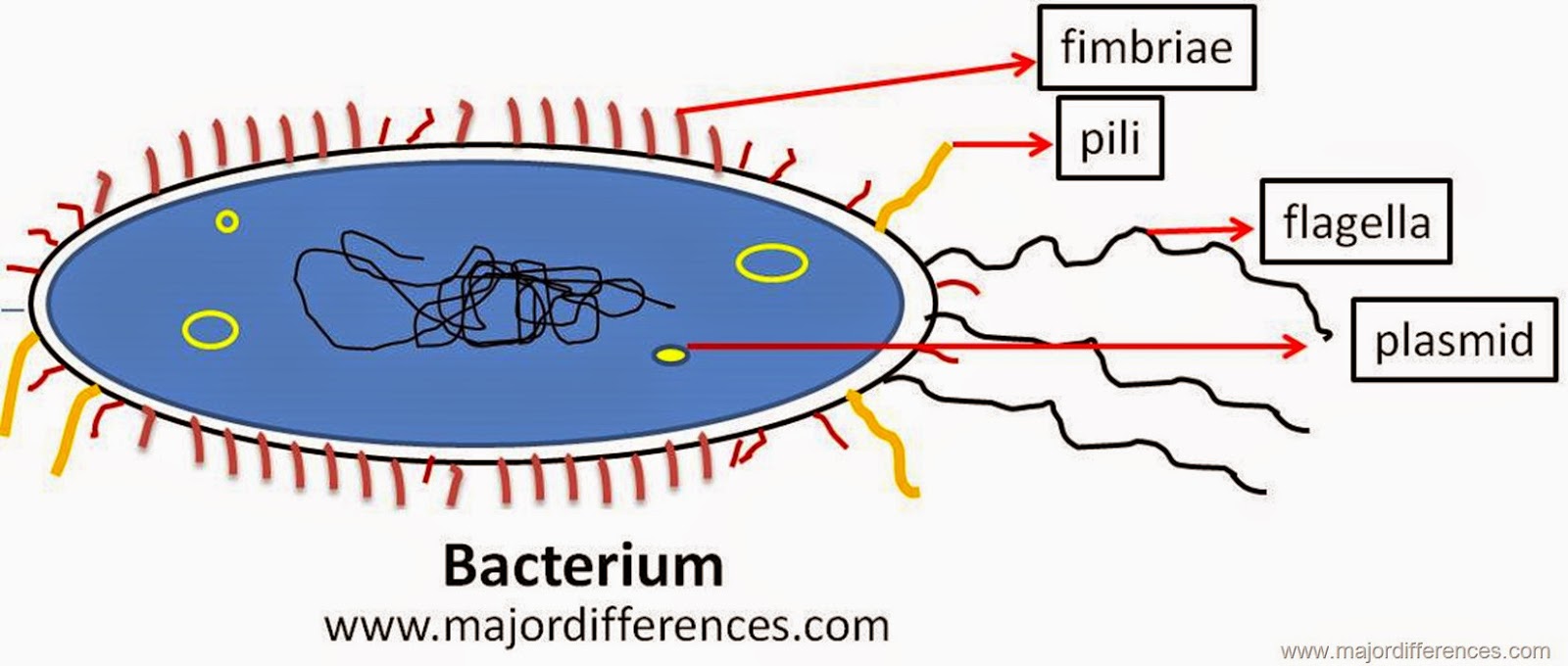Pili and fimbriae are cell surface appendages present in bacteria other than flagella. These structures are not for locomotion.
Pili and fimbriae are surface appendages for attachment.
 Pili vs Fimbriae
Pili vs Fimbriae|
Pili
|
Fimbriae
|
|
Long, thicker, tubular structures
made up of protein pilin
|
Thin and shorter than the pili
|
|
Pili are found only in Gram
negative bacteria
|
Fimbriae are found both in Gram
negative and Gram positive bacteria
|
|
The number of pili are less (3-5
per cell)
|
The number of fimbriae is 300-400
per cell
|
|
Formation of pili is governed by
plasmid genes
|
Formation of fimbriae is governed
by bacterial genes in the nucleoid region
|
|
Pili, involved in cell to cell
attachment during bacterial conjugation. Therefore
called as sex-pili
|
Fimbriae is involved in cell to
surface attachment of bacteria
|
Pili can be used for "twitching" locomotion.
ReplyDeleteThanks. Really helpful!
ReplyDeleteNice answer I really found it very helpful thanks
ReplyDeleteEnter your comment...thank u it really helped me
ReplyDeleteCan we call fimbrae as s pili
ReplyDeleteno, both are different. Pili are the tubular structures whereas fimbriae are the small bristle like fibres sprouting out of the cell which helps in attachment
DeleteIt becomes really helpful for me....thank u so much😊😊😊
ReplyDeletePost a Comment
We Love to hear from U :) Leave us a Comment to improve this site
Thanks for Visiting.....